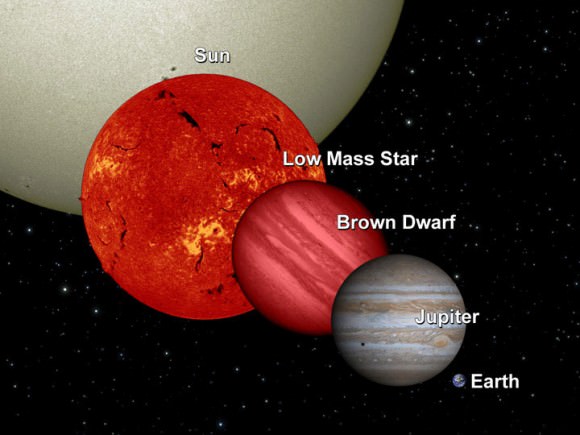Nature once again shows us how hard it is to fit astronomical objects into categories. An examination of a so-far unique brown dwarf — an object that is a little too small to start nuclear fusion and be a star — shows that it could have been as hot as a star in the ancient past.
The object is one of a handful of brown dwarfs that are called “Y dwarfs”. This is the coolest kind of star or star-like object we know of. These objects have been observed at least as far back as 2008, although they were predicted by theory before.
A group of scientists observed the object, called WISE J0304-2705, with NASA’s space-based Wide-field Infrared Survey Explorer (WISE). Looking at the spectrum of light it had emitted, which shows the object’s composition, has scientists saying that what the brown dwarf is made of suggests it is rather old — billions of years old.
“Our measurements suggest that this Y dwarf may have a composition … or age characteristic of one of the galaxy’s older members,” stated David Pinfield at the University of Hertfordshire, who led the research.
“This would mean its temperature evolution could have been rather extreme – despite starting out at thousands of degrees, this exotic object is now barely hot enough to boil a cup of tea.”

While the object started out hot, its interior never was quite enough to fuse hydrogen. That led to the extreme cooling visible today.
Models suggest the object would have begun its life shining at 2,800 degrees Celsius (5,072 Fahrenheit), for a phase that would have lasted for 20 million years. In the next 100 million years, its temperature would have almost halved to 1,500 Celsius (2,730 Fahrenheit).
And it would have kept cooling, with a temperature of 1,000 Celsius (1,832 Fahrenheit) after a billion years, and after billions of more years, the temperature we see today — somewhere between 100 Celsius (212 Fahrenheit) and 150 Celsius (302 Fahrenheit).
The paper will be published shortly in the Monthly Notices of the Royal Astronomical Society. The research is available in preprint version on Arxiv. One limitation of the research is the small number of Y dwarfs discovered, only about 20, which means that more observations will be needed to see if other objects could have had this same evolution.
Source: Royal Astronomical Society

